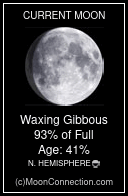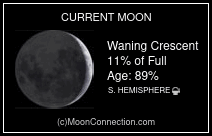Marie Laveau
New Orlean's Voodoo Queen
Born in 1794 in Vieux Carre. her father, Charles Laveau, is said to have been a wealthy white planter and her mother, Darcantel Marguerite, a mulatto with a strain of Indian blood. Marie herself is described as being mulatto, quadroon, and sometimes just as "yellow". She was a tall statuesque woman, with "curling black hair, 'good' features, dark skin that had a distinct reddish cast, and fierce black eyes."
A lovely twenty-five year old Marie was married to a freeman of color, Jacques Paris. The couple was married by the chaplain of the St. Louis Cathedral.
Marie and Jacques had both been raised Roman Catholic and she still practiced it devoutly, attending a daily worship at St. Louis Cathedral.
Following Jacque's death (actually, he was presumed dead after a lengthy disappearance), the Widow Paris, as Marie was then called, lived with another
man named Christophe Glapion. It is doubtful that they were actually married, but Marie bore an incredible fifteen children. One daughter, also named Marie, was in later years, an incredible lookalike that was often mistaken for her mother. This is probably the reason that Marie's magic was believed to be so great that she could appear in two places at once.
In her youth she helped the American wounded at the Battle of New Orleans. As an mark of how high in society she would climb, Marie was one of the few African-Americans invited to attend the funeral of General Jean Humbert, a hero of the Battle of New Orleans. In her later years Marie visited the convicts on death row in the city's jail, bringing them comfort and food. Usually she brought them gumbo -- a traditional New Orleans seafood stew of African origins; it has been suggested she sometimes laced the gumbo with natural medicinal herbs that soothed the convicts' physical and mental pain. Some speculated that at least once, Marie actually drugged the gumbo with a substance which caused the premature death of a prisoner who had a date with the hangman, sparing the victim the trauma of execution.
Marie's main source of fame was sorcery, Black Magic and the paranormal. Prominent politicians would seek her help, sometimes asking her to predict their futures. For a fee, Marie could cast and remove spells. She was reputedly good with love potions and curses, too. But one thing she was particularly skilled at was obtaining secret information about prominent locals.
She obtained her information through an elaborate spy network of servants and slaves in New Orleans who feared the Voodoo Queen. Marie had many clever methods for recruiting new spies. One trick was to secretly place a Voodoo doll near the front door of her victims, usually the house-servants of distinguished New Orleans homes. The victims, upon discovering the Voodoo doll, would be convinced they were being hexed (by some witch other than Marie), and would run to the Voodoo Queen for help. Marie, also referred to by many locals as the "Bosswoman," would offer to dispel the doll's power if in return the victims would agree to spy for her. Marie had once been a hairdresser and knew how the gentry foolishly liked to talk, even about confidential matters. Society women would chat away with Marie the hairdresser as though she were irrelevant, a mere servant. In reality, the aristocrats were feeding Marie vital information which she would use later to her advantage. Men, too, readily succumbed to the beguiling Marie. It is believed by some that Marie Laveau once operated a house of prostitution from her house, Maison Blanche, on the shore of Lake Pontchartrain, as a rather prosperous side-business. As she became more powerful, she had her spies listening closely in almost ever prestigious home in the city.
In the later years of her life, Marie Laveau gradually moved away from pure Voodooism. Some of her critics claimed she was in league with the Devil, yet she had once been a devout Catholic, and over time she began to incorporate Roman Catholic elements into her Voodooism. Statues of the Saints, the belief in the Virgin Mary, and Holy Water were now mixed in with the snake, the Zombies, and the gris-gris. Eventually, Marie Laveau would give up on Voodoo altogether and return completely to the Roman Catholic religion.
In 1869, past the age of 70, Marie Laveau was replaced as Voodoo Queen. Her followers had determined Marie had grown too old to be in charge. Marie spent the rest of her life as a devout Roman Catholic and dedicated much time and effort visiting the prisoners in the local jail as an act of charity; she even helped build prayer altars for them in their jail cells, it was said. In 1881, at 87, Marie Leveau died, and was believed to be buried in St. Louis Cemetery Number 1, beside her common law husband, down on Basin Street. Whether this is her grave, or her daughter Marie's is a mystery.
Her grave is visited by the faithful and the curious year-round. Many come to her tomb and place small offerings there, like beans, food or various Voodoo items. Many believers tap three times on the top of the tomb, or make three chalk X's on the face of her stone tomb and ask for a favor. Some believe that Marie Laveau's spirit rises on St. John's Eve, June 23, and holds court over a spectacular Voodoo ritual.
New Orlean's Voodoo Queen
Born in 1794 in Vieux Carre. her father, Charles Laveau, is said to have been a wealthy white planter and her mother, Darcantel Marguerite, a mulatto with a strain of Indian blood. Marie herself is described as being mulatto, quadroon, and sometimes just as "yellow". She was a tall statuesque woman, with "curling black hair, 'good' features, dark skin that had a distinct reddish cast, and fierce black eyes."
A lovely twenty-five year old Marie was married to a freeman of color, Jacques Paris. The couple was married by the chaplain of the St. Louis Cathedral.
Marie and Jacques had both been raised Roman Catholic and she still practiced it devoutly, attending a daily worship at St. Louis Cathedral.
Following Jacque's death (actually, he was presumed dead after a lengthy disappearance), the Widow Paris, as Marie was then called, lived with another
man named Christophe Glapion. It is doubtful that they were actually married, but Marie bore an incredible fifteen children. One daughter, also named Marie, was in later years, an incredible lookalike that was often mistaken for her mother. This is probably the reason that Marie's magic was believed to be so great that she could appear in two places at once.
In her youth she helped the American wounded at the Battle of New Orleans. As an mark of how high in society she would climb, Marie was one of the few African-Americans invited to attend the funeral of General Jean Humbert, a hero of the Battle of New Orleans. In her later years Marie visited the convicts on death row in the city's jail, bringing them comfort and food. Usually she brought them gumbo -- a traditional New Orleans seafood stew of African origins; it has been suggested she sometimes laced the gumbo with natural medicinal herbs that soothed the convicts' physical and mental pain. Some speculated that at least once, Marie actually drugged the gumbo with a substance which caused the premature death of a prisoner who had a date with the hangman, sparing the victim the trauma of execution.
Marie's main source of fame was sorcery, Black Magic and the paranormal. Prominent politicians would seek her help, sometimes asking her to predict their futures. For a fee, Marie could cast and remove spells. She was reputedly good with love potions and curses, too. But one thing she was particularly skilled at was obtaining secret information about prominent locals.
She obtained her information through an elaborate spy network of servants and slaves in New Orleans who feared the Voodoo Queen. Marie had many clever methods for recruiting new spies. One trick was to secretly place a Voodoo doll near the front door of her victims, usually the house-servants of distinguished New Orleans homes. The victims, upon discovering the Voodoo doll, would be convinced they were being hexed (by some witch other than Marie), and would run to the Voodoo Queen for help. Marie, also referred to by many locals as the "Bosswoman," would offer to dispel the doll's power if in return the victims would agree to spy for her. Marie had once been a hairdresser and knew how the gentry foolishly liked to talk, even about confidential matters. Society women would chat away with Marie the hairdresser as though she were irrelevant, a mere servant. In reality, the aristocrats were feeding Marie vital information which she would use later to her advantage. Men, too, readily succumbed to the beguiling Marie. It is believed by some that Marie Laveau once operated a house of prostitution from her house, Maison Blanche, on the shore of Lake Pontchartrain, as a rather prosperous side-business. As she became more powerful, she had her spies listening closely in almost ever prestigious home in the city.
In the later years of her life, Marie Laveau gradually moved away from pure Voodooism. Some of her critics claimed she was in league with the Devil, yet she had once been a devout Catholic, and over time she began to incorporate Roman Catholic elements into her Voodooism. Statues of the Saints, the belief in the Virgin Mary, and Holy Water were now mixed in with the snake, the Zombies, and the gris-gris. Eventually, Marie Laveau would give up on Voodoo altogether and return completely to the Roman Catholic religion.
In 1869, past the age of 70, Marie Laveau was replaced as Voodoo Queen. Her followers had determined Marie had grown too old to be in charge. Marie spent the rest of her life as a devout Roman Catholic and dedicated much time and effort visiting the prisoners in the local jail as an act of charity; she even helped build prayer altars for them in their jail cells, it was said. In 1881, at 87, Marie Leveau died, and was believed to be buried in St. Louis Cemetery Number 1, beside her common law husband, down on Basin Street. Whether this is her grave, or her daughter Marie's is a mystery.
Her grave is visited by the faithful and the curious year-round. Many come to her tomb and place small offerings there, like beans, food or various Voodoo items. Many believers tap three times on the top of the tomb, or make three chalk X's on the face of her stone tomb and ask for a favor. Some believe that Marie Laveau's spirit rises on St. John's Eve, June 23, and holds court over a spectacular Voodoo ritual.















0 comments